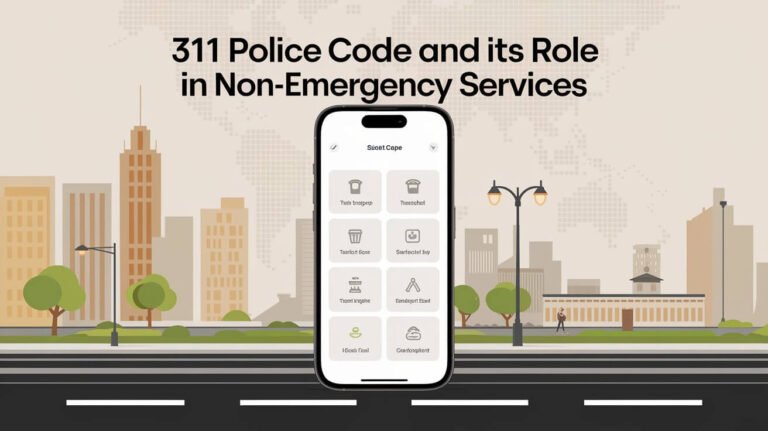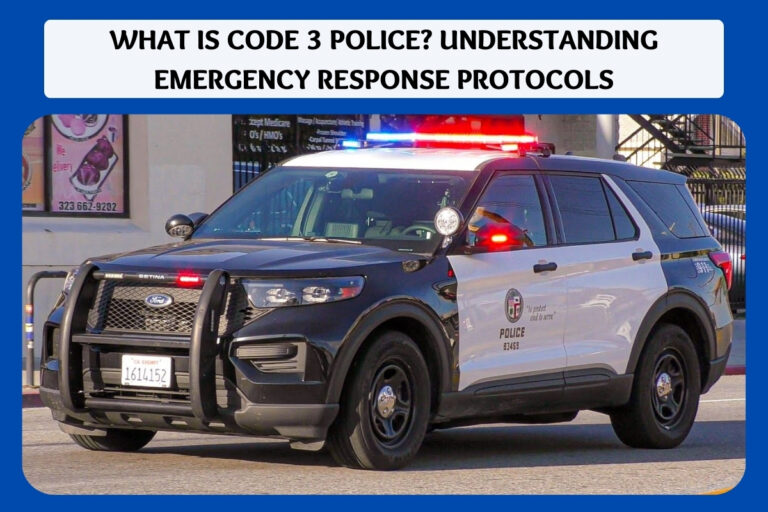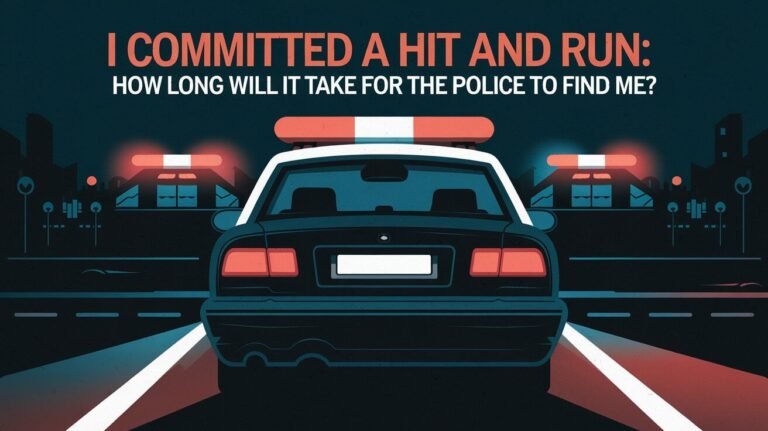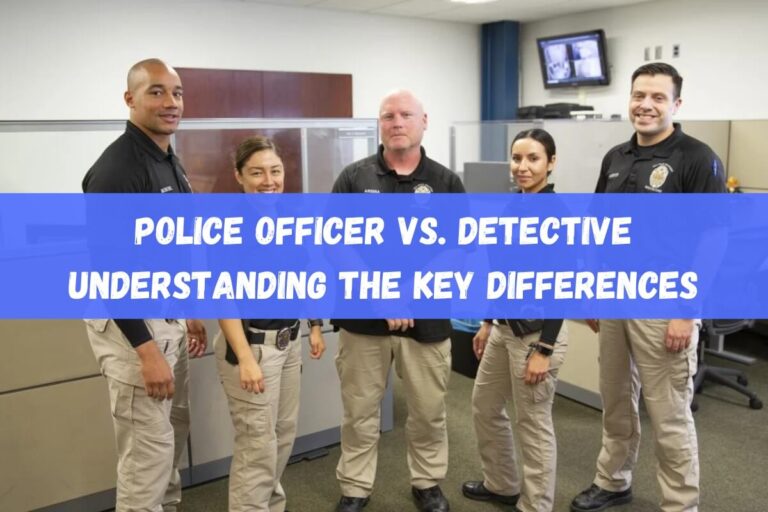Does The Police Department Have A Lost And Found?
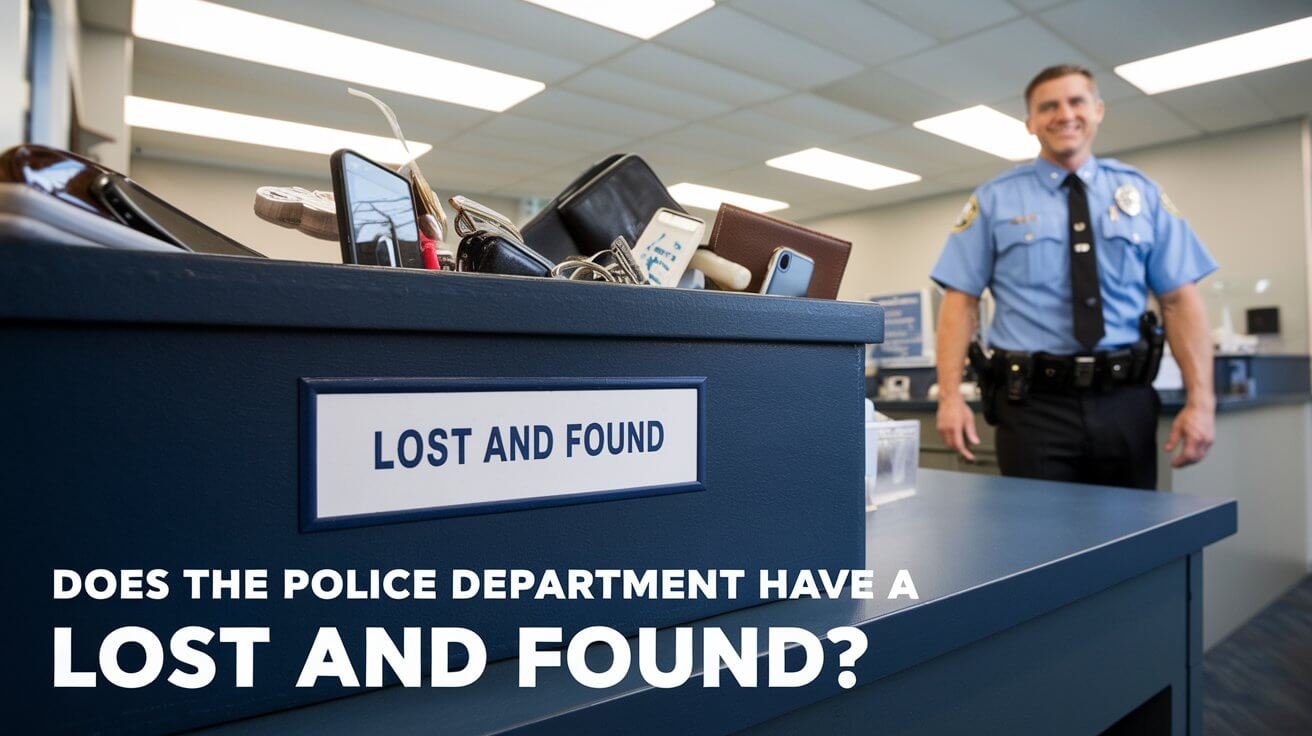
The police department’s lost and found is a great help for those who have lost things. It offers services to find missing items. If you lost something, it’s smart to call the lost and found department to see if they have it.
In the United States, police departments like UCLA and Cal Maritime have clear rules for lost items. They keep items for a certain time before giving them away or throwing them out. Knowing these rules can make it easier to get back your lost things.
Police Department Lost and Found Services
The police department’s lost and found services help people find their lost items. They handle many types of items, from personal documents to electronics. Knowing what items the police department can help with can make it easier to report a lost item.
Basic Service Overview
Lost and found services are key in community policing. For example, the UCLA Police Department deals with lost keys, sunglasses, and more. They keep a secure and organized system for lost and found items.
Types of Items Handled
The police department deals with many lost items. Some common ones include:
- Personal documents, such as identification and passports
- Electronics, such as phones and laptops
- Jewelry and other valuables
- Keys and other personal items
Department Responsibilities
The police department keeps lost and found items safe and organized. They document and store items in a secure place. Their goal is to return lost items to their owners, making their service vital to the community.
| Item Type | Description |
|---|---|
| Personal Documents | Identification, passports, etc. |
| Electronics | Phones, laptops, etc. |
| Jewelry and Valuables | Rings, necklaces, etc. |
Standard Procedures for Filing Lost Item Reports
When you report lost items to the police, it’s key to follow the right steps. The Cal Maritime Police Department asks for serial numbers and special marks. This helps them work on your case faster and find your lost item.
To start a lost item report, you need to give lots of details. This includes what the item looks like, its serial number, and where you last saw it. It’s important to act fast. The sooner you report it, the better chance it has of being found.
- Provide a detailed description of the lost item, including its make, model, and serial number (if applicable)
- Specify the location where the item was last seen
- Include any special identifying marks or features of the item
- Act quickly, as prompt reporting increases the chances of recovery
Following these steps and giving the right info, you help your lost item report get handled well. This boosts your chances of getting it back. Always check the lost item report procedures in your area, as they can change. Reporting lost items to the police is a big step in getting your property back. Knowing the standard procedures can really help.
Required Documentation and Identification
When you’re dealing with lost and found items, having the right documents is key. These documents help prove who you are and that you own the item. The police department might ask for different things, but usually, they want to see your ID.
Along with ID, you’ll need to show proof that the item is yours. This could be a receipt, a detailed description, or any other proof of ownership. Knowing what you need can make it easier to get your lost item back.
Acceptable Forms of ID
- Government-issued driver’s license
- Passport
- State-issued ID card
Proof of Ownership Requirements
To prove you own something, you might need to show:
- Receipts or invoices for the item
- Serial numbers or other identifying features
- Photographs of the item
Additional Documentation Needs
Sometimes, you might need more than just ID and proof of ownership. This could include a police report or a notarized statement. Always check with the police to see what else you might need.
| Document Type | Description |
|---|---|
| Government-issued ID | Driver’s license, passport, or state-issued ID card |
| Proof of ownership | Receipts, serial numbers, photographs, or other documentation |
| Police report | May be required for certain types of lost or found items |
Time Limits and Storage Policies
Time limits for claiming lost items are key in police lost and found policies. These rules say how long items stay before they’re thrown away or given away. For example, the Cal Maritime Police Department keeps lost items for 180 days before getting rid of them. This gives people a chance to find their lost things.
Police departments have strict rules for storing lost items. These rules help keep items safe and organized. Some places might have different rules for things that can spoil or break easily.
Here are some important things to know about police lost and found policies and time limits:
- Items not claimed in time might be sold, given away, or destroyed, based on the department’s rules and the item’s state.
- Some places might give more time for special items like guns or expensive things.
- It’s important to know the specific rules of your local police department to get your lost items back on time.
Understanding police lost and found policies and time limits helps individuals recover their lost items. It’s important to act fast and follow the department’s rules to have a good chance of finding what’s lost.
Property Claim Process Steps
To start claiming found property from police, first contact the police department. You can call, email, or visit them in person. The UT Dallas Police Department has a lost and found inquiry form for reporting lost items.
After you contact the police, you need to fill out a form with item details. This form will ask for the item’s description, when it was lost, and other important information. It’s important to follow the department’s guidelines to make the process easier.
Collection Protocols
After submitting the form, the police will check the information and arrange for the item’s pickup. The pickup process might differ by department. It’s key to follow their instructions to safely get your property back. By following these steps and working with the police, you can successfully claim your lost items.
| Step | Description |
|---|---|
| 1. Initial Contact | Make contact with the police department to report the lost item |
| 2. Form Completion | Fill out a form providing detailed information about the item |
| 3. Collection | Arrange for the item to be collected from the police department |
Local Precinct Variations
Local police lost and found services can differ a lot between precincts. It’s key to know these differences if you’ve lost something. The way you report and claim items can change a lot.
Some precincts have a single lost and found system. Others handle these tasks at the local level. To find out how your precinct works, it’s best to call them directly.
This way, you can avoid getting lost in the process. You’ll know exactly what to do to get your lost items back. Important things to think about include:
- Reporting procedures: What information do you need to give when you report a lost item?
- Claiming procedures: What papers do you need to get your item back, and how do you do it?
- Storage policies: How long do lost items stay in storage, and what happens if no one claims them?
Knowing these details can really help you get your lost items back. It’s all about understanding the local police lost and found services in your area.
Special Categories of Items
Police departments have special rules for valuable items like firearms, jewelry, and other precious things. For example, the Boston University Police Department has a lost and found service. It accepts many items, including electronics, wallets, and jewelry.
For lost electronics, many police use services like Foundrop. This helps track and return lost items. Items are posted daily, except on weekends. To get your item back, you need to show proof of ownership and ID.
Valuable Possessions
Items like jewelry and watches get extra attention. They are kept in safe places. Before returning, owners might need to provide more information and go through checks.
Electronics and Devices
Lost electronics, like phones and laptops, are treated carefully. Police have special steps for these items, like erasing data and keeping them safe. Using Foundrop can help you get your electronics back.
Personal Documents
Personal documents, like IDs and passports, are handled with care. They are kept in a safe place. Before returning, owners might need to prove their identity.
Alternative Lost Item Resources
When items go missing, people often turn to police lost and found services. But, there are other ways to find lost items. These options are good when police can’t help or if the item isn’t a big deal.
Some places have their own lost item services or online spots to report lost things. These places are great for finding lost items. They help when police can’t do much.
Here are some examples of alternative lost and found resources:
- Online lost and found platforms, such as Crowdfind, that allow individuals to report and track lost items
- Independent lost item services that specialize in recovering lost items
- Community-based initiatives that provide lost and found services
Using these resources can help find lost items. It’s smart to try all options, including police services and other lost item services. This way, you have a better chance of getting your item back.
| Resource | Description |
|---|---|
| Online Lost and Found Platforms | Centralized location for reporting and tracking lost items |
| Independent Lost Item Services | Specialize in recovering lost items |
| Community-Based Initiatives | Provide lost and found services to the community |
Rights and Responsibilities of Property Owners
When dealing with lost and found items, it’s key to know the legal rights and duties of property owners. It’s important to understand laws about found property, like trying to find the owner before taking it. Property owner rights differ by place, but they usually include the right to get back lost property and the duty to handle found items lawfully and with respect.
Legal considerations for lost and found items are vital to protect property owners’ rights. For example, in the U.S., if someone finds a valuable animal, they must file an affidavit and possibly hold the animal for a while before it can be given to someone else. Also, items worth $100 or more must be given to the Police Department, and the finder gets a receipt.
Key Considerations for Property Owners
- Understand local laws and regulations regarding lost and found items
- Attempt to locate the owner of a found item before claiming it as one’s own
- Handle found items in a lawful and respectful manner
- Keep records of found items, including descriptions and serial numbers
By knowing these legal points, property owners can handle lost items or found property the right way. This helps protect their rights as property owners.
| Item Type | Retention Period | Disposal Procedure |
|---|---|---|
| Lost and Found Property | 180 days | Disposed of as per CSU directives |
| Unclaimed Safekeeping Items | 60 days | Destroyed or donated |
| Firearms | 180 days | Destroyed if unclaimed after clearance from the California Department of Justice |
Common Mistakes to Avoid
When dealing with lost and found items, it’s key to know common mistakes. Not reporting lost items quickly or not giving clear descriptions can make it hard to get them back. To avoid these mistakes, report lost items fast and give accurate details.
Understanding the value of quick reporting and detailed descriptions is vital. Give info like the item’s make, model, and any special features. These steps help increase the chance of getting your lost items back and prevent the frustration of losing something important.
Some common mistakes to avoid when dealing with lost and found items include:
- Failing to report lost items promptly
- Not providing detailed descriptions of the items
- Not following up with the police department
- Returning found items to the wrong location
- Not trying to find the owner’s contact information
Being aware of these mistakes enables you to take steps to prevent them. Try to find the owner’s contact info, contact the bank or credit card company in the lost item, and use online searches and social media to locate the owner. If all else fails, return the item to the nearest police station for safekeeping and possible owner retrieval.
| Item Type | Recommended Action |
|---|---|
| Valuables (jewelry, phones, etc.) | Return to the police department |
| Personal documents | Try to find the owner’s contact information |
| Electronics | Contact the manufacturer or return to the police department |
Final Note
As we wrap up our look at the police department’s lost and found services, it’s clear they are very important. They help people get back their lost items. By knowing how to report lost items and claim found property, people have a better chance of finding what they lost.
The conclusion on police lost and found shows the department’s hard work benefits everyone. It helps the community and gives valuable information for crime analysis and officer performance.
While opinions may differ, the main point is the police department wants to help. By following the advice in this article, people can use the lost and found system well. This helps keep our community safe and happy.
Popular Questions
Does the police department have a lost and found?
Yes, the police department has a lost and found. It helps people find their lost items.
What types of items are commonly handled by the police department’s lost and found?
The police handle many items, like personal documents and electronics. They keep these items safe and organized.
What are the police department’s responsibilities when it comes to lost and found items?
The police keep lost items safe and organized. They have rules for how long items are kept before they are given away or thrown away.
How do I file a lost item report with the police department?
Reporting a lost item is easy. You need to tell them what was lost, its details, and where it was last seen.
What documentation is required when claiming found property or reporting a lost item?
You might need to show ID and proof of ownership. This could be a driver’s license or a receipt.
How long do police departments keep lost and found items before disposing of or donating them?
Police have rules for how long they keep items. Knowing these rules helps you get your lost items back on time.
What is the process for claiming found property from the police department?
Claiming found property involves a few steps. First, you contact the police. Then, you fill out a form with item details. After that, the police will verify and arrange for you to get your item back.
Do all police departments handle lost and found items the same way?
No, each police department has its own way of handling lost and found items. Some have a central system, while others handle it at the local level.
How are special categories of items, such as valuable possessions or personal documents, handled by the police department?
Special items like valuable possessions and personal documents get extra care. They are stored safely and returned according to specific rules.
Are there any alternative resources available for individuals who have lost items?
Yes, there are other places to look for lost items. This includes independent services, online platforms, and community groups.
What are the legal rights and responsibilities of property owners when dealing with lost and found items?
Property owners have certain rights and duties when dealing with lost items. This includes trying to find the owner and respecting privacy laws.
What are some common mistakes that individuals make when dealing with lost and found items?
Common mistakes include not reporting lost items quickly, not giving enough details, and not following up with the police. These can make it harder to get your items back.

